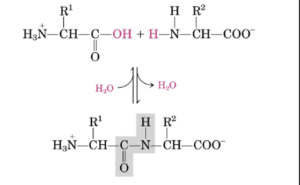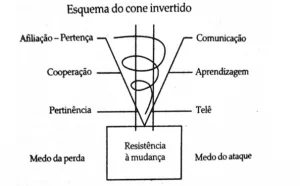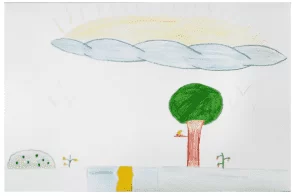SANTOS, Alan Ferreira dos [1]
SANTOS, Alan Ferreira dos. The reality of Educational Measures and its contradictions-A sociological study. Multidisciplinary Core scientific journal of knowledge. Year 01, vol. 09, pages 707-723, October/November 2016. ISSN:2448-0959
SUMMARY.
Educational institutions have as their function, promote the socialization of adolescents in conflict with the law. Using the ECA as subsidy and basis for action and orientation of the ducts, reaches “theoretically” minor offender reintegration. Nevertheless, when we have paired up “side by side” the laws of ECA and we face with reality itself, we noticed some discrepancies poignant, that more than evident, are everyday and permeate the society as a whole, manifesting itself at every moment. Method: a bibliographical research of qualitative nature. The material used, were: newspapers, magazines, videos. Objectives: to bring out the contradictions between the ECA (Ideal/Proposition) and Educational institutions (Reality/position). Conclusion: the ECA aims to rehabilitate adolescents in conflict with the law, by means of their inalienable rights. However, this law does not manifest itself in educational institutions, although appear as exception and not the rule. Mostly what happens is the reverse, instead of promoting the reintegration of the subject, encourages violence and crime. It is understandable that the phenomenon occurs, not because of the legislation, but rather of the practical conditions of management and administration of units and the community as a whole. From the unveiling of a part of reality can at least identify the difficulties, and possibly allow an opening for the reflection on the modes of intervention.
Key words: law of ECA. Educational Institutions. Educational Measures.
INTRODUCTION.
The institutional field of internal system as the fulfillment of socio-educational measure, which proposes a change in the behavior of the teenager, going on a personal and social reintegralização. Young people when they arrive at the House go through a process of evaluation with psychologists and social worker to know your underlying condition. The institution contains the classrooms, with teachers of various levels, from elementary school 1st to 4th, 5° and 9° series and 1st to 3rd grade of high school. Has workshops in arts, theatre, music and urban culture by promoting the development of cultural manifestations, which are aided by teachers specific to each area, which are closely linked to teens during their daily routines. The work in the field of the arts extends to dance, being specifically developed the procedures of hip-hop and street dance. In the plastic arts develops the graffiti and music, jazz, choirs, acoustic guitar, socializing, low and also classical music sound styles, among others.
The professional training is provided from courses that the institution provides as a way to lead to new skills to inmates in order to empower them in a profession and directs them to a future entry into the labour market, the privileged areas of this field are: Administration, tourism, food, crafts, computers, Health and aesthetic. Each course has a duration of 45 hours, with complementary activities and assistance of pedagogical workers in case of learning disabilities.
The area of sport is as comprehensive as the other, young people build groups of handball, basketball, soccer, table tennis and chess, so they train and develop sports skills, where they compete in regional tournaments, and not only that, practice also, race training for racing competitions Are.
Health professionals are nutritionists, which remains in occupation of the preservation of food and nutritional care of every institution. Pharmacists provide drug services for specific cases.
The psychosocial area includes the professionals of psychology and social assistance, to assist in diagnosis, giving a direction to teens about their actual conditions. The medicine responsible for physical and mental health, by conducting tests. Have the job security for your time, have function to ensure safety of all locations of the Foundation.
And there is also the maintenance professionals, who promote daily regularity of the well-being of all, which are: The school cooks, janitors, maids, garbagemen and concierges.
In this sense we can realize that there is a multidisciplinary work and an integration of teams, health, psychological, pedagogical and technical support. That are available to teens in your daily life, fostering and developing practices that assist in the reintegration of the subject in society (Government of the State of São Paulo, Fundação Casa general guidelines. Available in: <http: www.fundacaocasa.sp.gov.br=””>.</http:> Access in: 07/11/2015).
A REALITY FOR THE MOST PART CONTRARY TO THE ECA.
The activities produced in teenagers ‘ routine and of professional workers, is intended to carry out practices that promote the resocialization of the inner, with this purpose is set to execution of tasks, to empower and develop the skills necessary to ensure that the young can rejoin society again. Nevertheless, the reality diverges from the ideals proposed by ECA, is not always the institution comply with your obligation (since it is a right) to carry out the quality education which proposes and even physically and psychological care, compromising not only the the adolescent’s point of view, since being a phase of human development and some of the most complex (puberty), cause structural changes in psychological dynamics, causing mental disorders, in addition, the practices carried out by professionals, we could say “hired by the State”, diverge dramatically, resulting in effects on socio-familiar organization, which from the perspective of psychosocial rehabilitation should be combined with care and not a hindrance .
An important issue is the number of offenders in certain units of the same House Foundation has a limit of slots corresponding to the top geographic size, the facilities and the services provided by the entity. For your time, it is common to find such limits, making it unlimited:
Designed for only one person, the small bedroom comes to House three teenagers. Even so, there is only one bed in most rooms. Made of the same concrete floors and walls, requires that mattresses are placed standing in a corner during the day, because the moisture penetrated in the cement can do it rot. In fact, the moisture is the re-thinking the smell of abandonment of the Educational Service Center (Case) Regional Novo Hamburgo. Built 11 years ago, the unit has been designed to meet the demand of the time, with a capacity of 60 interns. Today, the site is home to almost 100 juvenile delinquents more than it should, being the largest center overcrowding throughout the State among the problems that have become routine for both the internal and the 77 158 agents working on the site, are the lack of water in the bath time and sewer overflow at night. There is also the own occupation of the four, where a teenage boy sleeps in the bed and the other two share a single mattress dumped to the ground (RECKZIEGEL, Raquel. Overcrowded, Case has structure to 60 slots, but is home to 158. In: <https: social.shorthand.com/jornalnh/3yr7vkblyy/superlotado=””>.</https:> Access in: 10, September, 2016).
We can understand the structural problems of accommodation in dormitories, the materials of primary necessity are missing, become an obstacle the everyday activities, since as a practical exercise, if neither the reintegration process that is proposed by ECA, runs? In the motion, the Case is intended to institutionalize and first the juvenile offenders. However, in practice, the lack of proper structure to the current capacity prevents the work is, in fact, done as it should:
There is no ideal space, infallible. What we want is a place that encourages a sense of solidarity, justice and humanity. The lack of appeal involves exactly the opposite the State has omitted in several ways. The absence of investments in education, health, leisure and public safety can be examples. Unfortunately, between theory and practice there is a big gap, “ponders the sociologist and Professor at the Feevale, Sueli Cabral (RECKZIEGEL, Raquel. Overcrowded, Case has structure to 60 slots, but is home to 158. In: <https: social.shorthand.com/jornalnh/3yr7vkblyy/superlotado=””>.</https:> Access in: 10, September 2016).
The same occurs in FUNASE, overcrowding:
Together, the units have 1,139 vacancies, but currently serve about of 1,600 adolescents. Fifteen of them are full. The most severe situation is in Central Educational Service (Case) of Cabo de Santo Agostinho, in the great barrier reef, which has more than double the your ability. There are 346, when space should get 166 “How does a teenage girl who is in a jail cell, sleeping badly, living with an excessive number of teenagers in the same space, in unsanitary conditions, will experience a pedagogical proposal during the day and participate in educational activities? “asks José Ricardo Oliveira, Coordinator of Centro Dom Helder Câmara de Estudos e Ação Social (Cendhec), an organization for the defence of the rights of children and adolescents. (The internal routine FUNASE units. In: <http: m.tvjornal.ne10.uol.com.br/noticia/ultimas/2016/03/29/a-rotina-dos-internos-nas-unidades-da-funase–23528.php=””>Access in: 11, September 2016).</http:>
The reality is expressed in the everyday life of adolescents, the State promises security, education and dignified treatment to young people, what does not occur. In addition the professionals “struggle to work a series of tasks, such as the lack of hot water for the bath, bedrooms tight and conflicts generated due to these factors, ends up interfering with what should be a youth performance” (RECKZIEGEL, Raquel. Overcrowded, Case has structure to 60 slots, but is home to 158. In: <https: social.shorthand.com/jornalnh/3yr7vkblyy/superlotado=””>.</https:> Access in: 10, September 2016).
Interestingly some activities that could make an improvement in the treatment often is not available, such as psychological support:
They complain about the “lack of what to do”, the “pace”, the “few friendships” and, despite speaking as one who is in constant evaluation, they really want to talk about you. It is common for a small talk, even informally, the terms “bad influences”, “deviation”, “structure” psychologically. Convince the interviewer of the time is part of the dynamics of being there (and thence to leave), but be heard is something seen as a rare privilege (MATHUR, Camila. The routine of the young target of controversy about the reduction of the age of majority. In: <http: brasil.elpais.com/brasil/2015/06/24/politica/1435121422_140735.html=””>.</http:> Access in: September 11, 2016).
A factor of great value to assess the recovery of young, is the question of opportunities, the Foundation House, when “well structured” promote a range and a collection of activities that produce positive effects, however when the internal regressed to your community, they run into difficulties, because the same treatment you had before, no longer has, which can generate recidivism in crime “away from weapons and drugs, the boys are more dedicated at the Foundation HOUSE a range of opportunities that is almost never a reality for them outside of those walls “(MATTHEWS, Camila. The routine of the young target of controversy about the reduction of the age of majority. In: <http: brasil.elpais.com/brasil/2015/06/24/politica/1435121422_140735.html=””>.</http:> Access in: September 11, 2016).
Some psychological implications can be noted also when there is the day of visit:
Before entering the queue of visitors of the Fundação Casa units in São Paulo, mothers and sisters, children and ladies, regardless of age, must take into account a long session of humiliation to visit their relatives. Replicating the model of prison units, the process of vexatious begins in a booth in front of the official of the unit. Women are forced to take clothes and the lower three times. When there is distrust, they need to touch your private parts and blow the arm strength to see if anything falls inside their bodies. In some cases, detained youths reported that employees take advantage of the situation to then cause or punish the adolescents describing the anatomy of their relatives (CARDOSO, William. The routine of the vexatious magazines at the House. In: <http: ponte.org/revistas-vexatorias-na-fundacao-casa-e-a-rotina-de-prisioneiros/=””>.</http:> Access in: September 11, 2016).
The humiliation by law is a crime is charged by those agents, not only that, because the form of treatment that is granted to family members, can cause the refusal, claiming the visit of relatives, on account of the constraints that is caused in them, which in your time, carries on harm to young people who are devoid of visitors, which is an essential factor to the recovery process.
It is inevitable, but in some units of Fundação Casa there is torture. A teenager who made the complaint, questioning the function of the institution, follows the letter written by the same:
Ne a riot at was involved. Don’t put your hands on anybody after that employees put a hand on several teenagers, one of these teenagers was my person they stepped on my head on my leg and gave several punches in my head and on my back, it didn’t happen that day became routine in this physically assault Center know that for me to be here was not following my right of citizen fully am aware of everything I’ve done but I think some time at the Foundation House serves to me rethink in my attitudes and rebuild my life more ne an environment like the one we are humiliated and beaten is very difficult to live with we’ve done several police reports at the station more solved the only thing I got was a smile of an official saying that nothing is going to happen with He prevailed in this aggression and location (BAKER, black. In a letter, a teenager recounts torture routine in Foundation House. In: <http: negrobelchior.cartacapital.com.br/em-carta-adolescente-narra-rotina-de-torturas-na-fundacao-casa/=””>.</http:> Access in: September 11, 2016).
The unit of Jaboatão, is the model that represents the commitment and purpose of ECA, however, this is the exception and not law. Because as I’ve been demonstrating the unsanitary conditions and the inhumane treatment and imprisonment of medieval men, like animals still persists. For excellence, the greetings of the standards laid down should be performed, the management of the institution by competent persons is imperative and it makes a demand, not only the family, but society as a whole:
A facilitator for the development of our work is the fact that the unit not be overcrowded. So, we are able to know every teenager and understand their difficulties. Here we can structure and professionals who have the capacity to understand and work with the socioeducação “, recognized the Director. About the numerous courses promoted in the institution, the majority is accomplished through partnerships with civil society, the private sector and public entities. “We are open to anyone who wants to collaborate and also ran behind partnerships, as we did with the army for the boys to practice athletics, not to mention the collaboration of several people from the most diverse areas,” said the Director (Jaboatão: an oasis in system of resocialization of FUNASE desert. In: <http: especiais.ne10.uol.com.br/por_tras_do_muro/internas/jaboatao.html=””>Access in: 11, September 2016).</http:>
When an institution has a good Setup, can promote a transformation, or at least significantly transform the lives of minors:
I’ve never read a book in the ‘ big world ‘, Sir. Then I came here and met all these guys. Now I’m reading a book that tells the history of the world, the hominids, homo erectus, the men who came down from the trees and started to walk with two legs. It’s crazy, isn’t it, Sir? (TAJRA, Alex; Mendes, Vinícius. An afternoon at the Foundation HOUSE. In: <http: brasileiros.com.br/2015/09/uma-tarde-na-fundacao-casa/=””>Access in: 11, September 2016).</http:>
This is one of the reasons by which recurrence occurs according to Amanda Romão de Alencar Director of Fundação Casa de São Paulo:
The teenager is in this condition why he missed a lot of things to him, in the back. And we tried to offer him the maximum that we can offer. And sometimes it saddens us because we know that unfortunately he will be gone and will come across the same situation. We can say, that this decreases the chances of them, so to speak (occupied, c. House Foundation: no future for young offenders? Available at: <https: www.youtube.com/watch?v=”lLKCIO2ySos”>accessed: 21 September 2016).</https:>
FINAL CONSIDERATIONS.
Roberto da Silva pedagogue of the USP, tells us about the main problems regarding the management and the distribution of the Population Fund (tax), leaving implicit corruption and diversion of funds, which should be directed to the units, for better care of adolescents, says:
One of the problems is that the Court of Justice allows the overcrowding of the Fundação Casa units. Second, the admission for drug possession, the ECA does not allow such action. But the judges by will or individual questions end up imprisoning everyone. The third point is the ratio of officers to teenagers. To take care of 10000 teens, the Foundation House has 15000 employees, this is more than 1 employee for a teenager. But the units are 2, 3 Foundation staff taking care of 70 teenagers. Where are all those employees? Chances young people have, but the opportunities are not well managed in their favor (occupied, c. House Foundation: no future for young offenders? Available at: <https: www.youtube.com/watch?v=”lLKCIO2ySos”>accessed: 21 September 2016).</https:>
Other information in line with this, on the distribution of resources is “an estimate of the average monthly expenditure for a teenager, considering all the budget available to the Foundation divided by the number of attendances, is 7,000 to 9,000” real “(MATTHEWS, Camila. The routine of the young target of controversy about the reduction of the age of majority. In: http://brasil.elpais.com/brasil/2015/06/24/politica/1435121422_140735.html >. Access in: September 11, 2016).
The gigantic and bureaucratic structure enables more easily, because the communication between the instances being made the informational level, preventive agents may not identify the faults in the complex network of systems that link the units to each other. Some statistical data are important for better visualization of the problem.
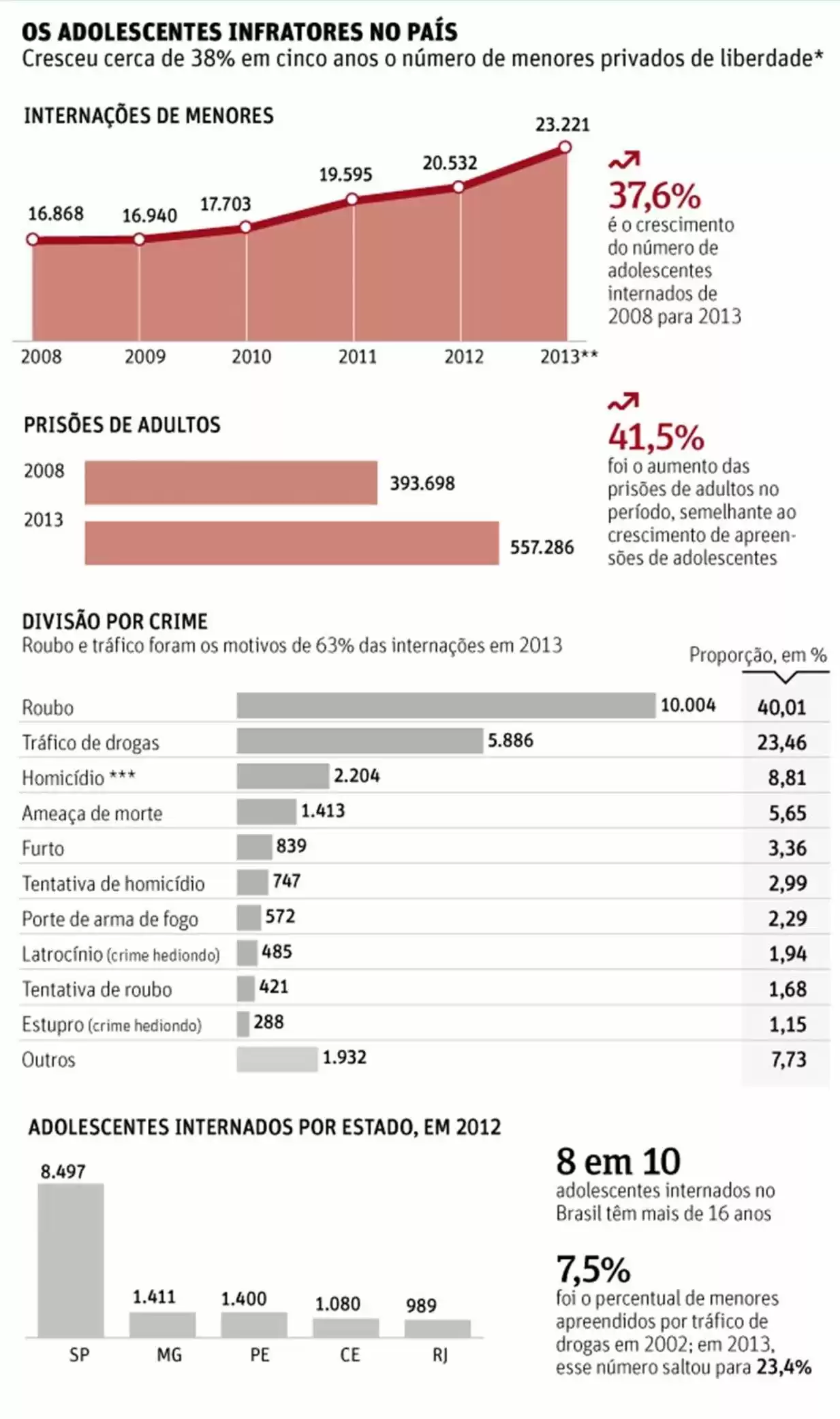
Coissi (2016)
This fact shows us, as did the development of the incidence of infracionais acts in 5 years, from 2010 to 2015, increased 38% coming be internal or 23000 adolescent in deprivation of liberty (COISSI, Juliana. Smaller bust 38% in 5 years is growing; it reaches the 23000. Available in: <http: www1.folha.uol.com.br/cotidiano/2015/04/1616282-apreensao-de-menores-cresce-38-em-5-anos-numero-chega-a-23-mil.shtml=””>.</http:> Access in: 21 September 2016).
There are still some units of educational measures, which do not have the infrastructure and appropriate monitoring, rather than promoting the distance of teen crime, the plays within the institution itself and the host. In this, there is a division of teenagers by quadrants, preemptive mode if found to minimize external conflicts of different factions (FERNANDES, Angelica. Minors are divided by factions in the Degase. Available in: <http: odia.ig.com.br/noticia/rio-de-janeiro/2015-07-04/menores-sao-divididos-por-faccoes-criminosas-no-degase.html=””>.</http:> Access in: 21 September 2016.
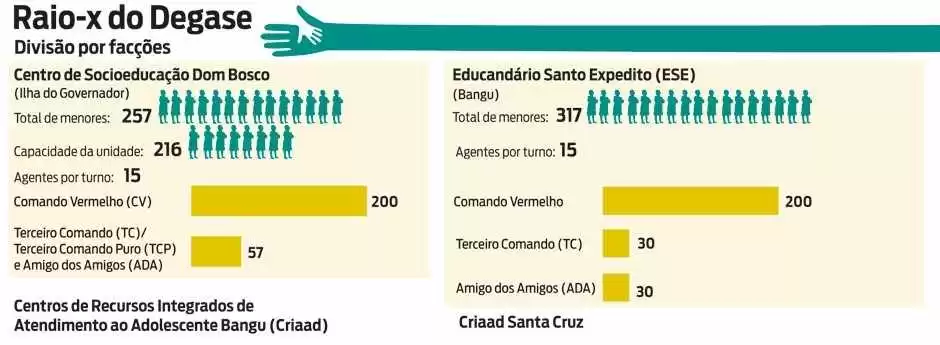
Fernandes (2016)
According to the data of the Special Secretary for human rights of the Presidency of the Republic (2012), and 744 21000 acts occur infracionais committed by teenagers, which is relatively low with respect to adults who are of 524,000 and 728 crimes. This means that 4% of crimes in Brazil, are run by 18-year-old minor. Some criticisms are made by ACE, serve as reflection to observe the reality:
The Statute was the law more elaborate, but need the resources to enforce these measures. We need jobs, psychiatry, monitoring, professional training courses, preferably free, are taught in the quarters-evaluates Vivienne Boehm.
Is a modern legislation for a country without money. But the legislation contains sufficient subsidies for a liver complaint measures to make the teenager is placed in the system and fully recovered to the extent that commits acts infracionais graves-understand Ricardo Joesting.
It’s a law of first world, but lack structure. If everything worked according to the ECA, the young return to society would be much better-complements the Court judge of childhood and youth, Márcio René rock.
It is easier to reduce the criminal majority than to equip the entire State apparatus would support the legislation already in force. What the State has to do is to apply the law, but it is easier to edit it-analyzes Deputy Tania Harada, who is responsible for the child protection police, teenager, Woman and Elderly of Joinville.
If we want any change, she must leave the goal of trying to make it work. Outside it is just a flag policy with political purpose aiming to solve the problem-adds the Commander of the 8th battalion of the military police, Nelson Henry Coelho (ADAMS, James. The Second Chance. Available at: <http: www.clicrbs.com.br/sites/swf/an_segunda-chance/eca.html=””>accessed: September 21, 2016).</http:>
On the re-education process and the teaching provided by units, your quality is debatable and even contradictory to what is proposed by ECA. Individuals who are in as “youth” or “ressocializados”, “reinstated”, “reinserted” often or mostly is a minority, let’s see an example of the foundation Casa de São Paulo, which is a model unit:
The internal of São Paulo, 9000 only 19 were approved this year in technical schools or colleges of technology. The percentages are even smaller when it comes to access to conventional higher education: in São Paulo, 838 internal teenage House Foundation registered in the national high school Exam (Enem) last year, of which 612 were still fulfilling the measure youth work within the units on the date of the test, according to the institution. Until February, only nine of them made an opening in universities by Unified Selection System (Sisu) or by the University for all Program (ProUni) (FERNANDES, Sarah. Course for ‘ afterlife ‘, technical education to young people from the House Foundation is this exception. Available at: <http: www.redebrasilatual.com.br/educacao/2014/03/rumo-para-outra-vida-educacao-para-jovens-da-fundacao-casa-ainda-e-excecao-2911.html=””>accessed: September 24, 2016).</http:>
The case of rebel individuals is very common, second interview by Andrea Dip:
I think there’s a docilização body thing, a way to submit these teenagers, has a very strong sexual connotation, as institutionalized rape. The speech that repeats the, ‘ but he can kill me ‘, and I answer that is even possible. Because this boy has been through a process so violent in my life, and when he gets there, instead of you deconstruct this violence and try to build something positive, responds with more violence. I think crime is a wrong answer to a wrong situation. ‘ The world is unfair, my parents to get a packed lunch danam, my brother died murdered by PM, I don’t understand anything at school. ‘ Then I wonder: a boy like that, when it comes out of the institution, that relationship will be with the world? Had the case of the boy who set fire on dentist in Diadema. He spent a year in the hospital. How many of these magazines, humiliations and tortures he passed? Will he created a pleasure to see the suffering on the other? Until that point he didn’t have played what lived? He scratched the phosphorus, but who threw the alcohol? I’m not absolving him of responsibility, but to what extent we do not contribute to this situation? Let me tell you something very serious: if he’s healthy, he’s going to rebel. “(DIP, Andrea. Thrown to the Lions. Available at: <http: apublica.org/2015/05/jogados-aos-leoes/=””>accessed: September 25, 2016).</http:>
If we think that education is the only way to rise to the economically vulnerable classes, marginality and those who can ascend socially, is a minority. The absence of proposal and of intervention, produces a population, marginalized and devoid of any possibility of modifying your own reality. Of 9000 teenagers, only 19 be approved in technical course, through a model unit, being that this is an excellent unit, approaching the maximum possible of the propositions of the ECA, makes us think that maybe this is a problem. In this sense, taking as an example a high-quality institution, we compare them, the other of dubious quality, outside State of São Paulo in Brazil. If the “best” institution produces, such amount of success and those that are not the “best” units, which produce?
BIBLIOGRAPHICAL REFERENCES.
The routine of the interns in FUNASE units. In: <http: m.tvjornal.ne10.uol.com.br/noticia/ultimas/2016/03/29/a-rotina-dos-internos-nas-unidades-da-funase–23528.php=””>Access in: 11, September 2016.</http:>
ADAMS, James. The Second Chance. Available at: <http: www.clicrbs.com.br/sites/swf/an_segunda-chance/eca.html=””>accessed: September 21, 2016.</http:>
BAKER, Black. In a letter, a teenager recounts torture routine in Foundation House. In: <http: negrobelchior.cartacapital.com.br/em-carta-adolescente-narra-rotina-de-torturas-na-fundacao-casa/=””>.</http:> Access in: September 11, 2016).
Brazil. Special Secretary for human rights of the Presidency of the Republic. Brasília, Ed° 1, 2012.
CAREY, William. The routine of the vexatious magazines at the House. In: <http: ponte.org/revistas-vexatorias-na-fundacao-casa-e-a-rotina-de-prisioneiros/=””>.</http:> Access in: September 11, 2016).
COISSI, Juliana. Smaller bust 38% in 5 years is growing; it reaches the 23000. Available in: <http: www1.folha.uol.com.br/cotidiano/2015/04/1616282-apreensao-de-menores-cresce-38-em-5-anos-numero-chega-a-23-mil.shtml=””>.</http:> Access in: 21 September 2016.
DIP, Andrea. Thrown to the Lions. Available at: <http: apublica.org/2015/05/jogados-aos-leoes/=””>accessed on: 25 September 2016.</http:>
FERNANDES, Angelica. Minors are divided by factions in the Degase. Available in: <http: odia.ig.com.br/noticia/rio-de-janeiro/2015-07-04/menores-sao-divididos-por-faccoes-criminosas-no-degase.html=””>.</http:> Access in: 21 September 2016.
Fernandes, Sarah. Course for ‘ afterlife ‘, technical education to young people from the House Foundation is this exception. Available at: <http: www.redebrasilatual.com.br/educacao/2014/03/rumo-para-outra-vida-educacao-para-jovens-da-fundacao-casa-ainda-e-excecao-2911.html=””>accessed: 24 September 2016.</http:>
Government of the State of São Paulo, Fundação Casa general guidelines. Available in: <http: www.fundacaocasa.sp.gov.br=””>.</http:> Access in: 07/11/2015.
Vancouver: an oasis in the desert of resocialization FUNASE system. In: <http: especiais.ne10.uol.com.br/por_tras_do_muro/internas/jaboatao.html=””>Access in: 11, September 2016).</http:>
MATHUR, Camila. The routine of the young target of controversy about the reduction of the age of majority. In: <http: brasil.elpais.com/brasil/2015/06/24/politica/1435121422_140735.html=””>.</http:> Access in: September 11, 2016).
BUSY, c. House Foundation: no future for young offenders? Available at: <https: www.youtube.com/watch?v=”lLKCIO2ySos”>accessed: 21 September 2016.</https:>
RECKZIEGEL, Raquel. Overcrowded, Case has structure to 60 slots, but is home to 158. In: <https: social.shorthand.com/jornalnh/3yr7vkblyy/superlotado=””>.</https:> Access in: 10, September 2016).
TAJRA, Alex; Mendes, Vinícius. An afternoon at the Foundation HOUSE. In: <http: brasileiros.com.br/2015/09/uma-tarde-na-fundacao-casa/=””>Access in: 11, September 2016).</http:>
[1] Undergraduate course of Psychology-Universidade Paulista (Unip)
